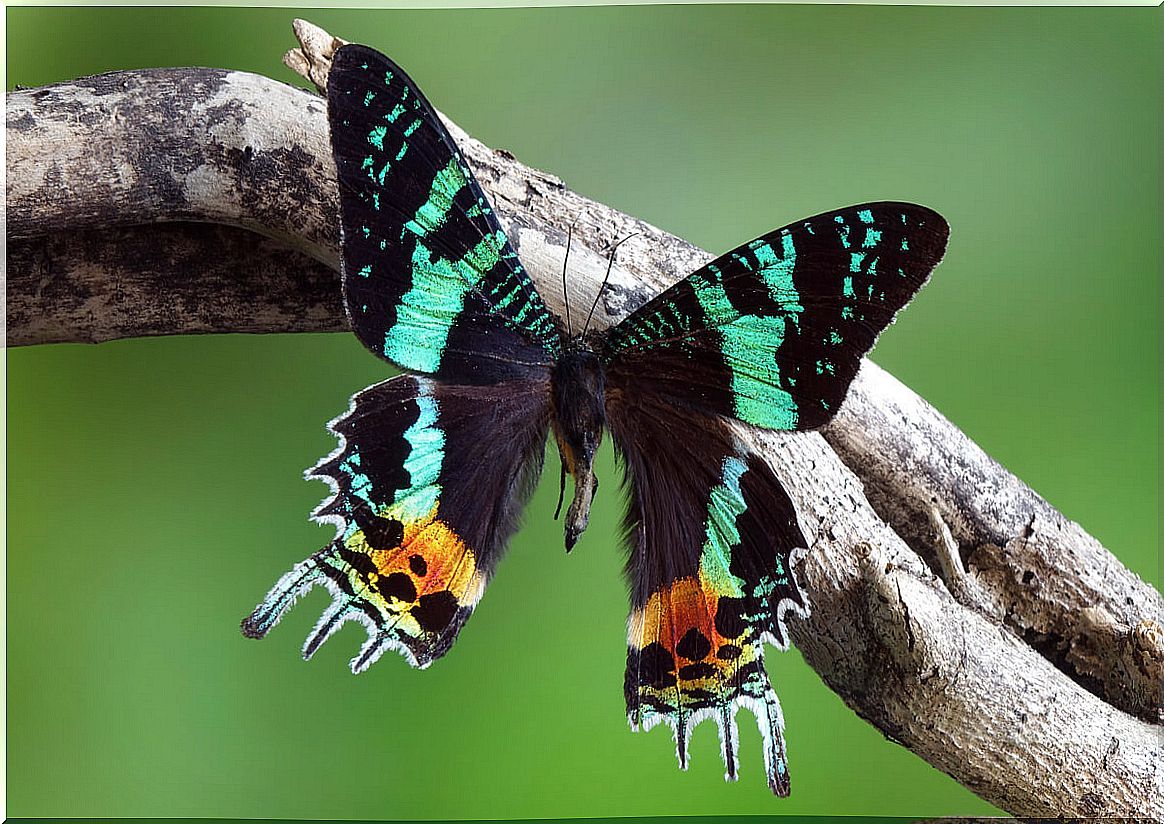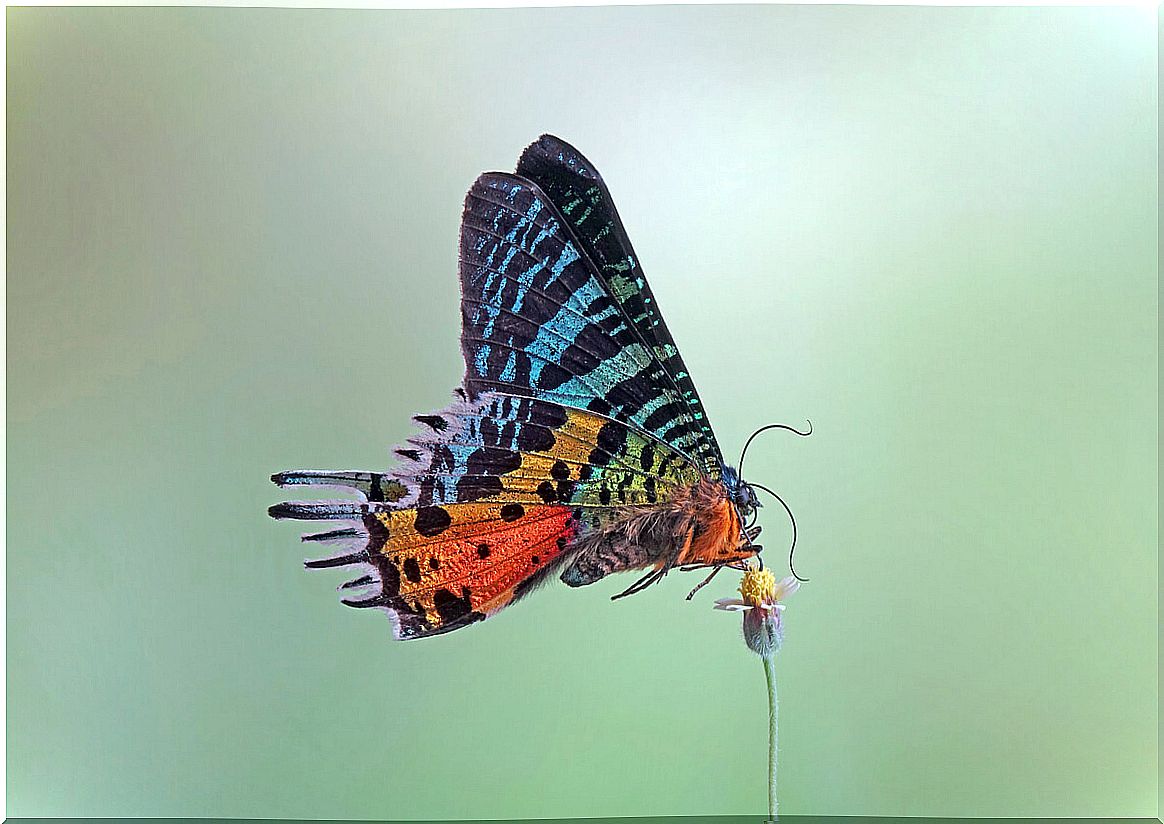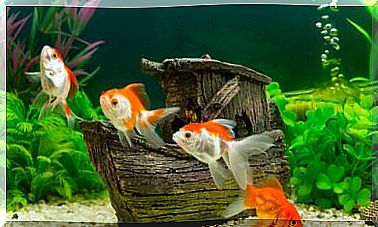The Twilight Moth: A Noble Spirit Of Madagascar

The Madagascar twilight moth ( Chrysiridia rhipheus ) belongs to the order Lepidoptera and the family Uraniidae . This species has a very distinctive trait that has attracted the attention of the people of the region for years: its strong iridescence.
The pattern of the wings of this diurnal moth is quite unusual, as it has several metallic colors on the wings and iridescence exists even in the ventral area. If you want to know more about this fascinating flying invertebrate, read on.
The twilight moth is a member of a large family
In general, insects of the order Lepidoptera – which include butterflies and moths – are the second most important pollinators on the planet. They have in common the fact that they develop through four stages of life.
In this way, they undergo metamorphosis and feed on their own eggshells for their first meal. There is a great variety of Lepidoptera throughout the world, with 20,000 different species and an unusual diversity of shapes and colors. The size of these insects can vary from 1/8 inch to 12 inches.
Also, Lepidoptera share many aspects with each other, such as the ability to see only 3 different colors: red, green, and yellow. However, there are still enough morphological and physiological differences to distinguish the various taxa within this order.

A special animal for its iridescence
It is interesting to know that the fantastic appearance of this beautiful moth is due to its iridescence. That is, it is produced thanks to the optical phenomenon that is generated when its wings reflect light.
The light reflects off its wings in an arc, in such a way that it exhibits bands of the 7 essential colors. Thus, its wing surface shows different shades of light depending on the angle of observation.
In this type of coloring there is no type of pigment. In this sense, its tonality has to do with the structure or arrangement of very small scales, which vary in size and shape. For this reason, this phenomenon is known as structural coloration.
Color patterns in the bodies of animals are generally produced by the distribution of pigments with different colors. However, other animals such as the twilight moth use the spatial variation of color-producing microstructures.
The coloration of the twilight moth is the object of study
The structural coloration of the twilight moth is being studied by scientists. Its wings have a periodic microstructure in submicron size, which produces its wonderful shine. The morphology of its scales and the spatial variation of the microstructure are an interesting example of physical phenomena, such as optical interference and diffraction.
Distribution and diet
The twilight moth is an endemic insect to Madagascar. This is mainly due to its strong association with plants of the genus Omphalea , which thrive on the island.
In its caterpillar stage it is defined as a specialist, since the larvae feed exclusively on plants of the genus Omphalea , specifically on the ankaranensis, palmata, occidentalis and oppositifolia species . However, the adult twilight moth is a generalist, feeding on the nectar of a wide variety of plants.
Although the adult moth no longer depends on plants of the genus Omphalea , this species never strays too far from them. This is due to the plant’s need for its larva to survive. The adult Madagascar twilight moth has diurnal habits and only lays its eggs on the underside of the leaves of Omphalea plants .

A final secret weapon
Once the eggs hatch and the larvae emerge, the caterpillars feed on the Omphalea plant . The intake has a dual purpose: nutrition and chemical defense. This species of plant produces a powerful toxin that, once ingested by the larva, will remain with the insect for the rest of its life.
It is interesting to know that the caterpillar consumes the plant and almost instantly uses the toxins to defend itself against potentially pathogenic ants, which also reside on the same plant.
These ants, which generally attack insects that try to feed on the plant, ignore the larvae that excrete the toxin. Later, when it reaches adulthood, the twilight moth and its pupa no longer excrete toxins, but store them to deter predators.









